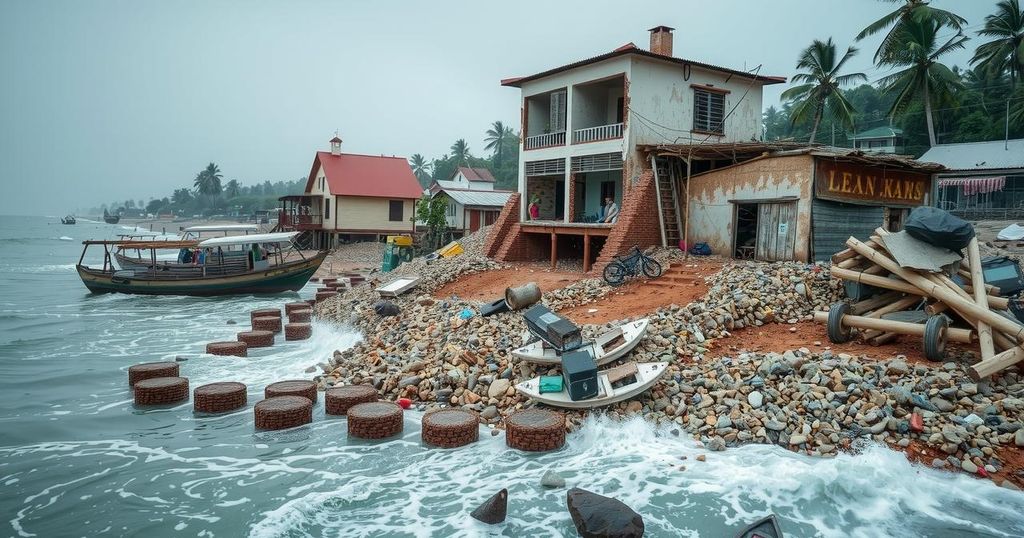The December 26, 2004, tsunami, triggered by a 9.1 magnitude earthquake, devastated coastal areas in India, leading to over 10,000 fatalities and extensive destruction. Survivors like Yusuf Ansari and Jaya recount their harrowing experiences, highlighting ongoing recovery challenges despite government efforts. As the anniversary approaches, local groups prepare memorials to honor the victims, reflecting on the lasting impact of the disaster on affected communities.
On the fateful morning of December 26, 2004, a 9.1 magnitude earthquake struck off the coast of Sumatra, generating a catastrophic tsunami that affected countries across the Indian Ocean, including India. In Nagapattinam, Yusuf Ansari was just a child enjoying a game of cricket when the disaster unfolded. “Out of nowhere, we saw a boat tossed by the waves, followed by a massive rush of dark water and a big wave of water. It all happened so fast,” recalled Ansari, now a motor rickshaw driver at age 32. This tsunami resulted in the tragic loss of around 230,000 lives across multiple nations, emphasizing the sheer scale of the devastation.
As the anniversary of this disaster approaches, local organizations plan to pay homage to the victims by pouring milk into the sea and laying flowers at grave sites along the coast. Jaya, a mother of three, vividly remembers the panic-stricken moments of that day when her husband was out fishing: “The water turned dark, and waves started rising higher and higher,” she recounted. The tragedy left more than 10,749 people dead in India alone, with approximately 7,000 fatalities occurring in Tamil Nadu.
In the aftermath, the Tamil Nadu government undertook significant restoration efforts, supported by international financial institutions, to build resilient infrastructure. New homes were established, offering essential amenities. However, challenges remain. Fisherman Kuppi Ratnam expressed frustrations over coastal protection efforts, noting, “The stones don’t hold up any more, and the sand keeps washing away.”
Despite government efforts to provide housing, numerous families wrestle with the emotional scars left by the disaster. Many have been unable to rebuild their lives due to financial constraints or the trauma of returning to the very places that had witnessed such loss. The lingering impact of the tsunami serves as a reminder of the profound changes it wrought on the lives of those affected, with its scars still visible two decades later.
The 2004 Indian Ocean tsunami was one of the deadliest natural disasters in recorded history, initiated by a 9.1 magnitude earthquake, which devastated coastal regions across several countries, including India. In Nagapattinam, preparations are made each year to remember the victims of this disaster with memorials and commemorative activities. The Indian government has made considerable investments in rebuilding and rehabilitating affected areas; however, numerous challenges persist for the surviving communities in terms of infrastructure and emotional recovery.
The ongoing remembrance of the 2004 tsunami in India underscores the significant human and societal consequences of such natural disasters. Despite strides in recovery and rebuilding, many communities continue to grapple with the memories of loss and the challenges of rebuilding their lives. The resilience shown by those affected speaks volumes, yet the work towards ensuring their sustained well-being and safety from future calamities remains crucial.
Original Source: www.mymotherlode.com






